The code included here takes a bit stream of binary digits, Least Significant Bit (LSB) first, and outputs the two's complement of the complete stream, also LSB first. A Moore State diagram is attached.
Now when I try to test the code in a testbench, the states don't get updated as intended.
The FSM:
The design:
module seqDetector( input in,
input clk,
input rst,
output reg out);
//Moore Machine
parameter SX = 3'd4,
S0 = 3'd0,
S1 = 3'd1,
S2 = 3'd2,
S3 = 3'd3;
reg [2:0] cur_state,next_state;
//next state assignment
always @(posedge clk,negedge rst) begin
if( rst == 1'b0)
cur_state <= SX;
else
cur_state <= next_state;
end
//next state calculation
always @(cur_state,in) begin
case(cur_state)
SX: if(in == 1'b0) next_state = S0; else next_state = S1;
S0: if(in == 1'b0) next_state = S0; else next_state = S1;
S1: if(in == 1'b0) next_state = S3; else next_state = S2;
S2: if(in == 1'b0) next_state = S3; else next_state = S2;
S3: if(in == 1'b0) next_state = S3; else next_state = S2;
endcase
end
//output calculation
always @(cur_state) begin
case(cur_state)
SX: out = 1'bx;
S0: out = 1'b0;
S1: out = 1'b1;
S2: out = 1'b0;
S3: out = 1'b1;
endcase
end
endmodule
The testbench:
`timescale 1ns/1ns
module tb();
initial begin
$dumpfile("2's.vcd");
$dumpvars(0,tb);
end
reg clk;
reg in;
reg rst;
wire out;
initial begin
clk = 1'b1;
forever #5 clk = ~clk;
end
seqDetector s0(in,clk,rst,out);
initial begin
fork
#0 rst = 1'b1;
#10 rst = 1'b0;
#20 rst = 1'b1;
#10 in = 1'b0;
#20 in = 1'b1;
#30 in = 1'b0;
#40 in = 1'b1;
#50 in = 1'b1;
#60 in = 1'b0;
#70 in = 1'b0;
#80 in = 1'b1;
#90 in = 1'b1;
#100 in = 1'b1;
#110 in = 1'bx;
#120 $finish;
join
end
endmodule
The problem is portrayed in the following graph:
But when we change the testbench such that the inputs are delayed by 1 ns past the clock edge, the existing problem is solved and functionality is achieved. But there are a few glitches the origin of which I am unable to figure out, as shown here:
seqDetector s0(in,clk,rst,out);
initial begin
fork
#0 rst = 1'b1;
#10 rst = 1'b0;
#20 rst = 1'b1;
#11 in = 1'b0;
#21 in = 1'b1;
#31 in = 1'b0;
#41 in = 1'b1;
#51 in = 1'b1;
#61 in = 1'b0;
#71 in = 1'b0;
#81 in = 1'b1;
#91 in = 1'b1;
#101 in = 1'b1;
#111 in = 1'bx;
#120 $finish;
join
end
So the first question is: why is there a problem when I change input at the edge of clock, from the perspective of writing a Verilog code?
And the second question is: what is the cause of the glitches in the next_state variable?


